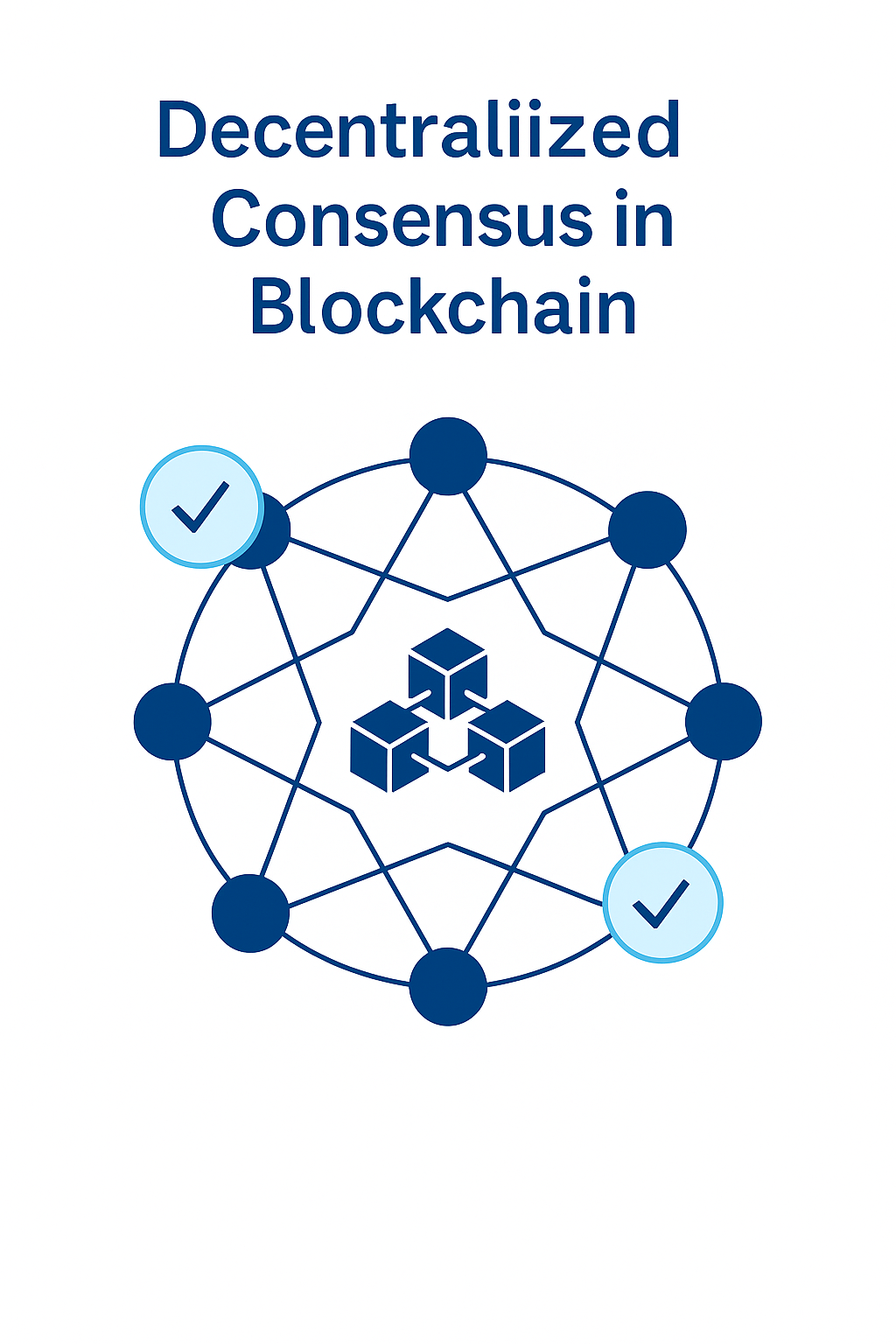In particular, decentralized consensus is essential to blockchain technology. It tackles the crucial requirement that several players in a system without a single organization exercising central control agree.

Decentralized Consensus Explained
A distributed system can come to an agreement on a legitimate state or value through the use of decentralized consensus. The validity of transactions and the sequence in which they are added to the shared ledger must be decided by all participating nodes in decentralized systems, as opposed to centralized systems, where a single authority makes decisions and maintains a ledger.
This procedure is crucial in situations when individuals may not know one another and there is a lack of trust between them. Rather than depending on a reliable third party or middleman, trust is built via validation, verification, and the network’s members’ common consent. This trust layer is claimed to be provided by the blockchain itself.
A consensus algorithm or consensus mechanism is the process used to reach this agreement. In order to guarantee that records are honest and reliable, these algorithms are essential. A consensus process that isn’t appropriate can expose the system to different types of attacks.
Key Properties of Distributed Consensus
Distributed consensus protocols must meet certain requirements:
- Termination: Eventually, each correct node selects a value.
- Validity: All proper nodes will agree on a value if they all suggest the same one. There must have been at least one node that suggested the chosen value.
- Integrity: The proper node can only determine one value.
- Agreement: On the same value, all correct nodes concur.
- Safety: No bad things happen since correct nodes don’t agree on a wrong value. Consensus algorithms require safety and liveness (termination) as basic requirements.
- Fault Tolerant: Even with malicious or malfunctioning (Byzantine) nodes present, the algorithm ought to function well.
Centralized vs. Decentralized Consensus
The main distinction is seen in the control structure:
Centralized Consensus: Accomplished by a lone central supervisor or manager. Although this is simple, there is only one point of failure.
Decentralized Consensus: Accomplished by delegating decision-making authority to a number of nodes or participants rather than a single person. By doing this, reliability is increased and the single point of failure is removed.
In a centralized system, users have to have faith in the integrity of the central organization. In a decentralized system that uses blockchain, trust is built by the network confirming the state and validating transactions.
Achieving Decentralized Consensus
In general, consensus algorithms can be divided into:
Proof-based Consensus Mechanisms: Nodes vie for the opportunity to suggest the next block or value, frequently by using resources. The victor substantiates their claim with “proof” (such as proof of effort). These are frequently utilized in networks of permissionless blockchains, in which anybody can join without requiring authorization. Delegated Proof of Stake (DPoS), PoW, and PoS are examples. Proof of Burn, Proof of Capacity, Proof of Activity, Proof of Weight, Proof of Luck, Proof of Ownership, Proof of Property, Proof of Authentication, Proof of Elapsed Time, Credit-based PBFT (CPBFT), Ripple, Tendermint, Simplified BFT (SBFT), Proof of Distribution, FRChain, and PoQ are other examples.
Voting-based Consensus Mechanisms: After reaching a particular level of consensus, nodes vote and communicate to determine whether a block or transaction is legitimate. Fault tolerance is frequently addressed by these, including Byzantine Fault Tolerance (BFT) and Crash Fault Tolerance (CFT). In particular, BFT deals with malicious nodes. This group of algorithms includes the widely used Federated Byzantine Fault Tolerance (FBFT), Delegated Byzantine Fault Tolerance (DBFT), and Practical Byzantine Fault Tolerance (PBFT) algorithms in permissioned blockchain networks. The important consensus algorithms Paxos and RAFT are also frequently addressed in relation to blockchain and distributed systems.
The consensus procedure in blockchain controls the process of validating and adding data to the network. In public permissionless networks such as Bitcoin, for example, proof-of-work (PoW) requires miners to solve computational problems. The first person to solve the puzzle adds the next block, which is subsequently verified by the network. Because participants in permissioned networks may have some degree of trust in one another, consensus models may be quicker and less computationally expensive.
By guaranteeing agreement among users by preset rules and algorithms, decentralized consensus, in short, is the technique that enables a distributed network, such as a blockchain, to operate without a central authority, enabling safe and dependable transactions.
